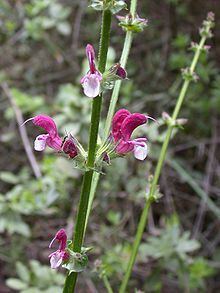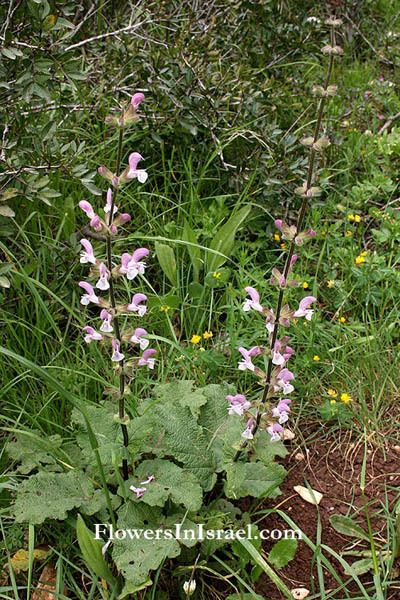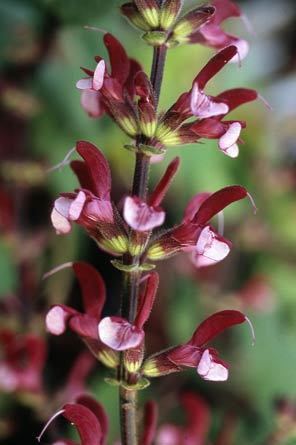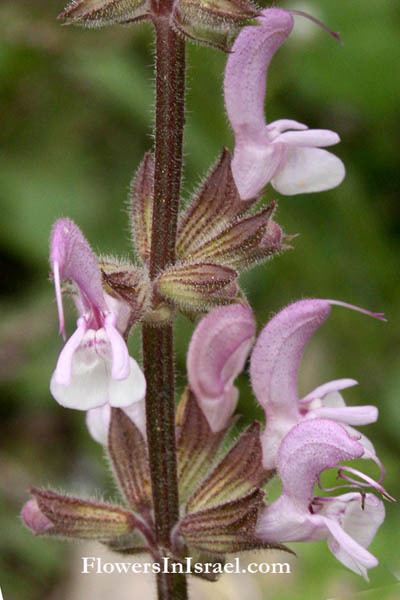Genus Salvia Rank Species | ||
Similar Salvia judaica, Salvia dominica, Salvia indica, Salvia palaestina, Salvia arizonica | ||
Salvia hierosolymitana, the Jerusalem salvia or Jerusalem sage, is a herbaceous perennial native to the eastern Mediterranean, with populations in Cyprus, Israel, Jordan, Lebanon, Syria, and the West Bank. It typically grows in open fields, rocky soils, and among low-growing native shrubs. It was first described in 1853 by botanist Pierre Edmond Boissier, with the epithet "hierosolymitana" referring to "royal, sacred Jerusalem".
It forms a mound of basal leaves that spreads to 2 ft, and slightly less in height. The ovate mid-green leaves are evergreen, lightly covered with hairs, and with a scalloped margin, growing 8-10 in long with prominent veining underneath. The 1 in or smaller flowers are a wine-red color, growing in widely spaced whorls, with 2-6 flowers per whorl. The lower lip is white, with wine-red spotting. The calyces are pea-green with red veins and bracts edged in red. The square stem of the 1 ft long inflorescences are also edged in red. Unlike many salvias, there is no odor when the leaves are crushed, and there is no known medicinal use of this plant.




